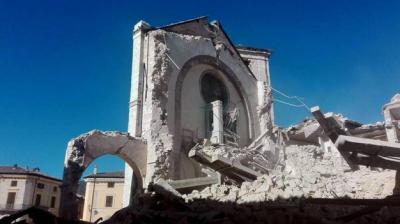Will Italy lose its Romanesque heritage?

NORCIA -- As treasured monuments and churches have been destroyed by earthquakes, some commentators say the Italian Romanesque heritage is at risk of disappearing, leaving the Middle Ages as only a myth to be found in story books. From the Basilica of Norcia to churches at Preci, Amatrice and Bagnoregio, the damage done by earthquakes in central Italy leaves the country ever more fragile.
The Marche and Umbria are two of the regions most rich in cultural tradition. In ancient times, great saints (such as Francis, Benedict and Rita) walked there, as well as great artists, namely Pietro Perugino and Raffaello Sanzio, Carlo Crivelli and Lorenzo Lotto.
The picturesque cities and villages are mostly made up of historic churches and town buildings. However, these very same constructions have recently been made victims of the earthquakes which have devastated the central regions of the country. A census carried out, according to Il Messaggero, shows that 293 churches and historic buildings have either collapsed or been significantly damaged.
The church of Saint Francis in Amatrice became an emblem of the shocking effects of the natural disaster, just like the Basilica of Saint Benedict in Norcia, the less well-known Saint Mary of Grace church and the Abbey of Saint Eutizio in Preci, along with some of Italy’s most ancient -- and beautiful -- monasteries, often ignored or looked over.
Hence some are starting to fear the worst -- is central Italy going to lose a vital piece of its past, its Romanesque heritage? The risk has dramatically increased over the last few nights as damages occurred right up to the Eternal City, and a lack of resources makes restauration works difficult.
For too long, Italy has suffered a lack in maintenance and restoration works. There’s no money allocated anymore to complete them, as many buildings and works of cultural and historic value are left abandoned and half-done. Often, smaller churches are referred to as ‘minor works’ and consequently fade into the background, forgotten whilst other larger works are prioritized. Despite this, they are in fact at the heart of the cities they are located in, where communities are born and congregate, not merely places to pray.
Nevertheless, while the damage has already been done and the fate of such works of art remains uncertain, Italy still has hope for the future, determined to cherish its outstanding cultural patrimony.
sw


